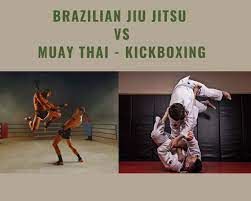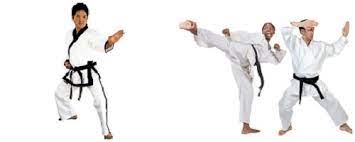Kickboxing vs Jiu Jitsu: A Comparison of Two Martial Arts
Introduction
Martial arts have gained popularity worldwide as effective self-defense systems and competitive sports. Among the various martial arts disciplines, kickboxing and Jiu Jitsu stand out as two unique and dynamic fighting styles. In this article, we will explore the key differences and similarities between kickboxing and Jiu Jitsu, highlighting their techniques, training approaches, and the benefits they offer. Whether you are considering learning a martial art for self-defense or simply want to engage in a physically demanding and rewarding activity, understanding the characteristics of kickboxing and Jiu Jitsu can help you make an informed decision.
Kickboxing
2.1 Origins and Techniques
Kickboxing is a striking-based martial art that originated in the 1960s. It combines elements of traditional boxing with various kicking techniques derived from Karate, Muay Thai, and other martial arts styles. Kickboxers primarily use punches, kicks, knee strikes, and elbow strikes to attack their opponents. The sport gained popularity due to its effectiveness in both self-defense and competitive fighting.
2.2 Training Methods
Kickboxing training focuses on developing speed, power, agility, and endurance. Practitioners engage in a combination of shadowboxing, bag work, pad work, sparring, and conditioning exercises. Training sessions typically include intense cardiovascular workouts to enhance overall fitness and stamina. Additionally, practitioners may incorporate strength training to improve striking power and core stability.
2.3 Benefits of Kickboxing
Kickboxing offers numerous benefits to those who practice it. Firstly, it provides a full-body workout that improves cardiovascular health, muscular strength, and flexibility. The dynamic nature of the sport also helps individuals enhance their coordination, balance, and reflexes. Moreover, kickboxing serves as an effective stress reliever, promoting mental well-being and self-confidence. Whether for fitness or self-defense purposes, kickboxing offers a challenging and rewarding martial arts experience.
Jiu Jitsu
3.1 Origins and Techniques
Jiu Jitsu, also known as Brazilian Jiu Jitsu (BJJ), originated in Japan and was further developed and popularized in Brazil. It is a grappling-based martial art that focuses on ground fighting and submissions. Jiu Jitsu techniques involve joint locks, chokeholds, and leverage to overcome opponents regardless of their size or strength. This martial art emphasizes technique and strategy over physical attributes, making it suitable for individuals of all body types and fitness levels.
3.2 Training Methods
Jiu Jitsu training typically involves partner drills, sparring, and positional training. Practitioners learn how to control an opponent on the ground, escape from unfavorable positions, and apply submissions effectively. Training sessions place a strong emphasis on leverage, timing, and proper body mechanics. In addition to the physical aspects, Jiu Jitsu training fosters mental discipline, problem-solving skills, and the ability to remain calm under pressure.
3.3 Benefits of Jiu Jitsu
Jiu Jitsu offers a range of benefits that extend beyond the mat. It provides a complete body workout, enhancing strength, flexibility, and overall physical fitness. The emphasis on technique and leverage allows individuals to overcome larger and stronger opponents using skill and strategy. Moreover, Jiu Jitsu cultivates mental fortitude, self-discipline, and humility. It promotes personal growth, boosts self-confidence, and provides a supportive community of practitioners.
Comparison
4.1 Striking vs. Grappling
One of the fundamental differences between kickboxing and Jiu Jitsu is their focus on striking and grappling, respectively. Kickboxing emphasizes powerful strikes using punches, kicks, knees, and elbows, while Jiu Jitsu focuses on ground fighting, joint locks, and chokes. Both disciplines have their strengths and weaknesses, and practitioners often choose based on personal preference and goals.
4.2 Stand-up vs. Ground Fighting
Kickboxing primarily takes place in a standing position, with fighters engaging in striking exchanges. On the other hand, Jiu Jitsu excels in ground fighting, where practitioners utilize their knowledge of submissions and positional control. While both martial arts teach self-defense techniques, the situations in which they are applied differ.
4.3 Physical Conditioning
Both kickboxing and Jiu Jitsu offer excellent physical conditioning benefits. Kickboxing provides intense cardiovascular workouts and enhances overall fitness levels. Jiu Jitsu focuses on functional strength, flexibility, and body control, crucial for ground-based techniques. The choice between the two depends on personal fitness goals and preferences.
4.4 Self-Defense Applications
Kickboxing and Jiu Jitsu both have practical self-defense applications, albeit in different scenarios. Kickboxing equips individuals with striking techniques to defend against attackers in standing situations. Jiu Jitsu, with its emphasis on ground fighting and submissions, offers effective self-defense options when facing larger or stronger opponents. Understanding the context and potential scenarios can help individuals determine which martial art suits their self-defense needs.
Conclusion
In conclusion, kickboxing and Jiu Jitsu are distinct martial arts with unique characteristics and benefits. Kickboxing focuses on striking techniques, offering a challenging and dynamic training experience. Jiu Jitsu, on the other hand, emphasizes grappling and ground fighting, promoting technique, strategy, and leverage. Whether you prefer the art of striking or the intricacies of submissions, both martial arts provide physical fitness, self-defense skills, and personal growth opportunities.







